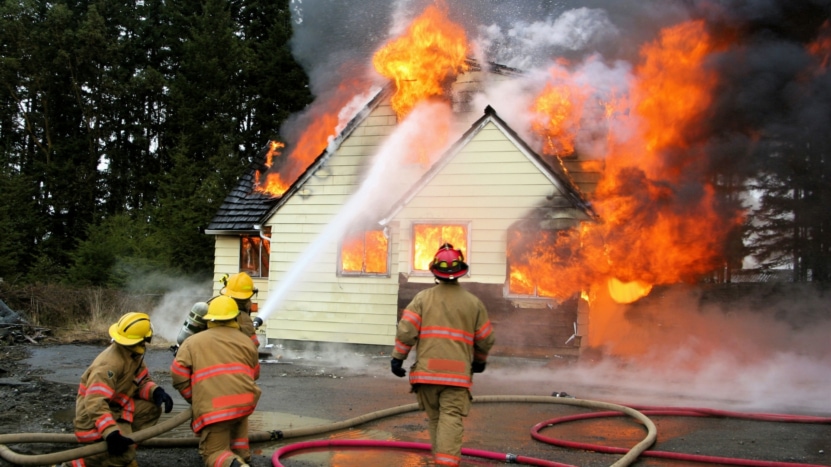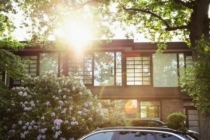What Is Hazard Insurance?
Hazard insurance, also known as fire insurance, is a specific part of a homeowners insurance policy that provides coverage for the physical structure of your home against certain risks, such as fire, windstorms, or vandalism. This type of insurance is commonly referred to as part of homeowners insurance. It’s important, however, to understand that hazard insurance strictly pertains to the protection of the physical structure of your home; it does not cover the personal contents inside nor it does not offer any liability coverage.
Hazard Insurance vs Home Insurance?
Hazard Insurance is a specific component of a homeowners insurance policy. Its primary focus is on covering the physical damage to the structure of your home caused by specific perils such as fires, storms, hail, theft, and vandalism.
This coverage is crucial as it directly addresses the risks that can compromise the structural integrity and value of your home. Hazard insurance is often required by mortgage lenders as a way to ensure that their financial interest in the property is protected against such risks. However, it’s important to remember that hazard insurance is limited to the structure of the home and doesn’t extend to other potential losses or liabilities.
In contrast, Homeowners Insurance is a more comprehensive package. It not only includes the coverage offered by hazard insurance but also expands to cover additional important aspects. Homeowners insurance typically consists of several key components:
- Personal Property Coverage: This part of the policy covers the contents of your home, such as furniture, electronics, clothing, and other personal belongings. It provides protection against theft, damage, or loss of these items, both inside and sometimes even outside your home.
- Liability Protection: This is a critical aspect of homeowners insurance. It protects you against legal responsibilities if someone is injured on your property or if you (or your family members, including pets) cause damage to others’ property. It can cover legal defense costs and any damages you might be required to pay.
- Additional Living Expenses (ALE): Also known as Loss of Use coverage, this part of the policy covers the additional costs you may incur if your home is uninhabitable due to a covered peril and you need to live elsewhere temporarily. This can include hotel bills, restaurant meals, and other living expenses above your usual living costs.
- Other Structures Coverage: This extends protection to structures on your property that are not attached to your home, like garages, sheds, fences, and gazebos.
Each component of homeowners insurance serves a unique purpose, offering a comprehensive shield that safeguards not just the physical structure of your home but also your financial well-being in various scenarios. This broader scope of protection is what differentiates homeowners insurance from hazard insurance.
Is Hazard Insurance Included In Homeowners Insurance?
Hazard insurance is typically included as a standard component within a homeowners insurance policy. This inclusion is significant because it addresses the need for protection against physical damages to your home’s structure. When we talk about hazard insurance being part of a homeowners policy, we’re referring to the specific part of the policy that deals with damages resulting from various perils, such as fires, storms, hail, vandalism, and other similar risks.
These perils can cause significant damage to the physical structure of a home, including its foundation, roof, walls, and any attached structures. The coverage provided by hazard insurance is designed to ensure that, in the event of such damages, the homeowner is not left bearing the full financial burden of repairs or rebuilding. This is especially important in areas prone to certain natural disasters, like flood zones or regions with frequent wildfires.
It’s crucial to understand that while hazard insurance is an integral part of a homeowners insurance policy, it does not cover every possible risk or damage. For instance, it typically does not cover the loss of personal belongings inside the home or liability issues; these aspects are covered by other parts of the homeowners insurance policy. Also, certain perils like floods and earthquakes might require additional, separate policies.
Moreover, the cost of this coverage and the specific risks covered can vary greatly depending on factors like the location of the home, the age and type of construction, and the homeowner’s personal choices in terms of policy limits and deductibles. Homeowners should carefully review their policy details to understand the extent of coverage provided by their hazard insurance and consider additional coverages if needed.
Why Is Hazard Insurance Important for Mortgages?
Hazard insurance plays a pivotal role in the home financing and ownership process, offering essential protection for both the homeowner and the lender. This type of insurance is particularly important because it secures the physical property which is the collateral for the mortgage loan. In the event of damage to the property caused by a covered peril, such as a fire or severe weather, mortgage hazard insurance ensures that funds are available to repair or rebuild the home, thus preserving its value and the homeowner’s equity in it.
For the homeowner, this insurance is crucial as it prevents the potential devastation of losing their investment in their home. Imagine a scenario where a major disaster strikes, causing significant damage to the home. Without hazard insurance, the homeowner would be responsible for all repair costs, which can be financially overwhelming, potentially leading to a risk of default on the mortgage.
From the lender’s perspective, mortgage hazard insurance is equally important. It protects their financial interest in the property. Lenders require this insurance as a condition of the mortgage because it ensures that their collateral is secure. If a disaster damages or destroys the home, the insurance guarantees that the property can be repaired or rebuilt, maintaining its value as collateral for the loan. This protection is crucial for lenders, particularly in high-risk areas or for properties that represent a significant financial investment.
Furthermore, mortgage hazard insurance also provides peace of mind to both the homeowner and the lender. Knowing that the property is protected against catastrophic losses allows homeowners to focus on their recovery after a disaster without the added stress of financial ruin. For lenders, it assures them that their investment is safe, which is a cornerstone of the mortgage lending industry.
What Is The Average Hazard Insurance Cost?
The average cost of hazard insurance varies significantly based on several factors, such as the location, size, and value of your home, along with the chosen coverage amount and deductible. Therefore, it’s recommended to obtain a personalized quote from a trusted insurance company or insurance agent that accurately reflects your specific situation.
Is Hazard Insurance Required?
Hazard insurance is mandatory if you have a mortgage, as lenders require it to protect the collateral for their loan. For homeowners without a mortgage, it’s not a legal requirement, but it is highly recommended for financial protection against potential damages to your home.
Hazard Insurance For Home: How Much Do I Need?
The amount of hazard insurance you need should be sufficient to cover the cost of rebuilding your home in the event of total loss. It is advisable to consult with an insurance expert to assess the appropriate coverage amount for your specific needs.
Hazard Insurance vs Mortgage Insurance: What’s The Difference?
Hazard Insurance primarily focuses on protecting your home from physical damages. This type of insurance is concerned with the structure of the home itself, covering losses due to specific perils like fires, storms, theft, and other similar events. The coverage is quite specific and is typically mandated by mortgage lenders to ensure that their collateral—the home—is protected against loss or damage. In the event of a covered peril causing damage to your home, hazard insurance steps in to cover the costs of repairs or rebuilding. It’s important to note that the scope of hazard insurance is limited to the structure of the home and does not cover personal property, liability, or loss of use.
On the other hand, Mortgage Insurance is designed to protect the lender rather than the homeowner. This type of insurance is usually required when a homeowner makes a down payment of less than 20% of the home’s value. The primary purpose of mortgage insurance is to safeguard the lender in case the borrower defaults on the loan. It reduces the risk for the lender, allowing borrowers to qualify for a loan with a lower down payment. Mortgage insurance does not provide any coverage for physical damages to the home; instead, it compensates the lender for the outstanding loan balance in the event of a default.
Protecting Your Home With The Right Coverage
Hazard insurance is a crucial part of your financial protection strategy when you own a home. It’s essential to understand what it covers and how it fits into your overall homeowners insurance policy. Remember, your home is more than just a building; it’s your sanctuary, and protecting it with the right insurance is paramount.
For tailored advice and comprehensive insurance solutions, consider reaching out to JVM Lending, where expertise and customer care come together to help you safeguard your home and peace of mind
Want To Learn More?
Hazard insurance is a crucial part of your financial protection strategy when you own a home. At JVM Lending, we’re always here to help you understand what it covers and how it fits into your overall homeowners insurance policy. Remember, your home is more than just a building; it’s your sanctuary, and protecting it with the right insurance is paramount.
If you have more questions about hazard insurance or anything else related to homebuying, don’t hesitate to reach out to our team of experts at JVM Lending.
*Please Note: The information provided in this blog post is intended for informational and educational purposes only. JVM Lending is not an insurance professional or insurance advisor. We strongly recommend consulting with certified insurance professionals for personalized advice and guidance on hazard insurance. If you’d like a referral to an insurance professional or insurance advisor, contact us and we’ll happily refer you to one of the trusted professionals in our network.











